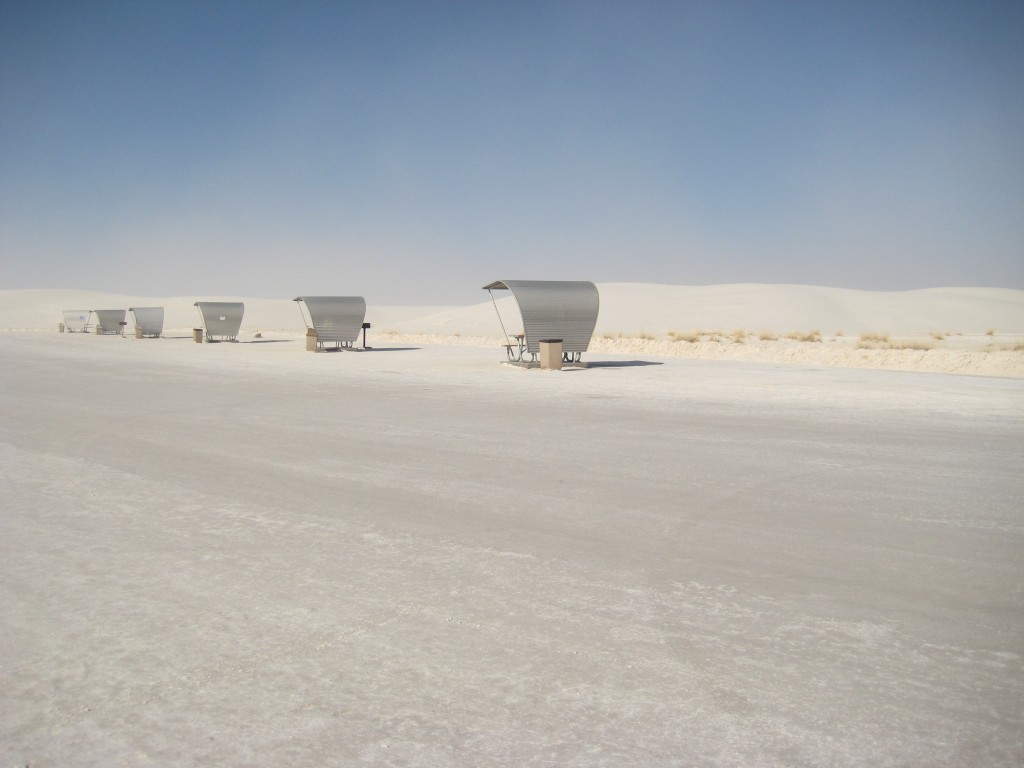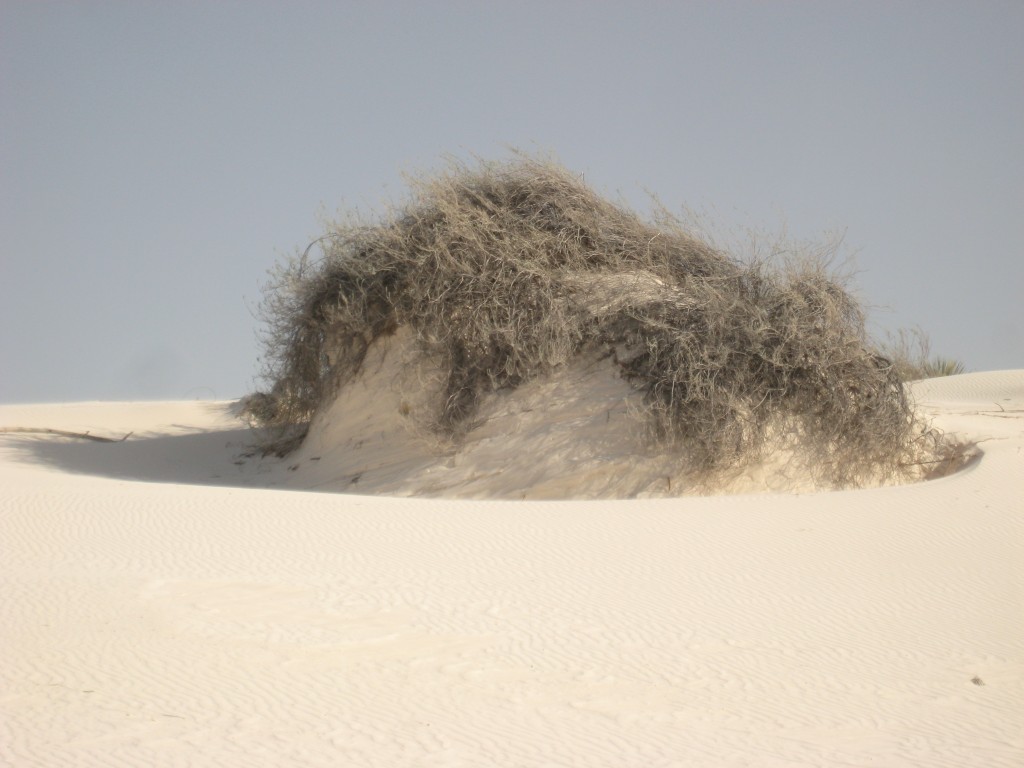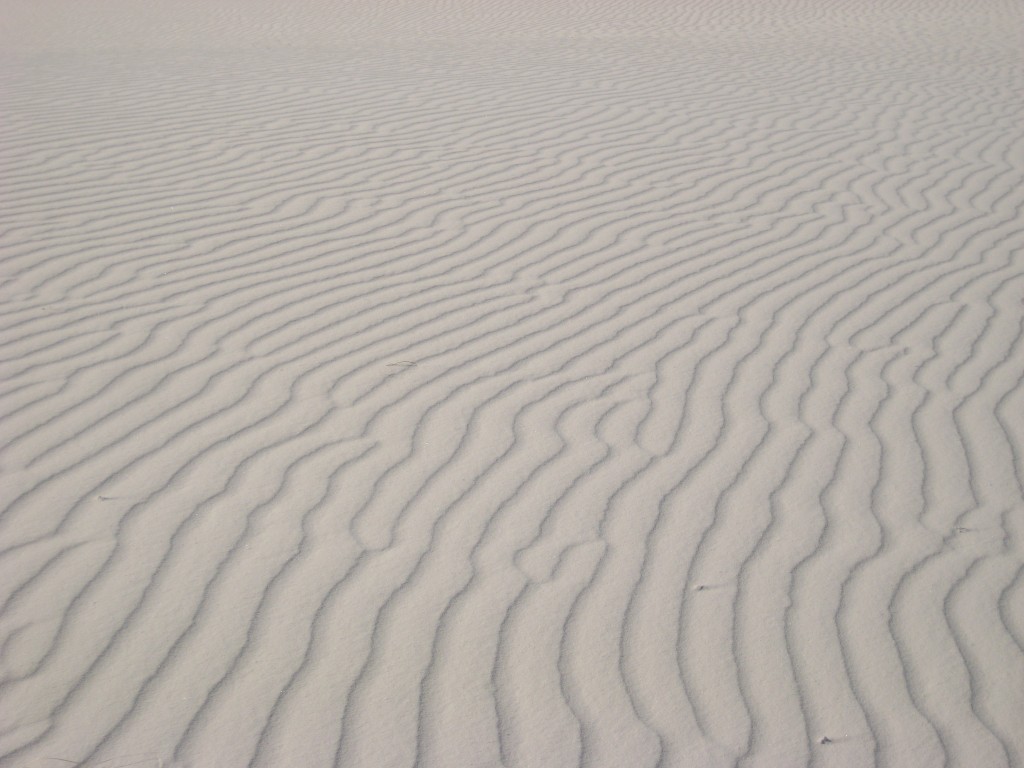One day I was looking at a friend's photos on Facebook and came across some he posted titled...."White Sands Nat'l Monument". They were of incredible beauty and I was blown away. We had gone past this very place many times in our travels on I-70 and had never stopped. It just didn't look that interesting. After seeing these photos we made it a point to stop on our next drive through and what an experience it was. It is like no place else on earth.... great wave-like dunes of gypsum sand engulfing 275 square miles of desert and creating the world's largest gypsum dune field. White Sands National Monument preserves about half the sands of this unique dune field, along with the plants and animals that have successfully adapted to this constantly changing environment. 
A paved road (the Dunes Drive) leads from the monument entrance on US 70 to the start of the sands 2 miles north. The road is paved for a while although blowing sand often covers the surface. Towards the center of the drive the surface is just compacted gypsum and the 'road' becomes a series of large cleared areas. The sands move up to 20 feet per year. As you drive everything is white, dazzlingly bright and capped on most days by a clear blue sky.
The most prominent plant in the dunes is the soaptree yucca, a species with numerous thin narrow leaves and an extensive root system that can stabilize a mound of sand and remain in place after wind causes the surrounding dune to more away. It also supports a limited range of wildlife, some of which has evolved white coloration to match the white dunes, and exist as species unique to this region only, such as the white sandswood rat, the Apache pocket mouse, and several lizards.
As we drove through the miles and miles of dunes we noticed the quiet solitude and the varied patterns in the sands of the wind swept dunes. There were no footprints , just wind-created ripples and occasional lizard tracks..... a beauty all its own.


No comments:
Post a Comment